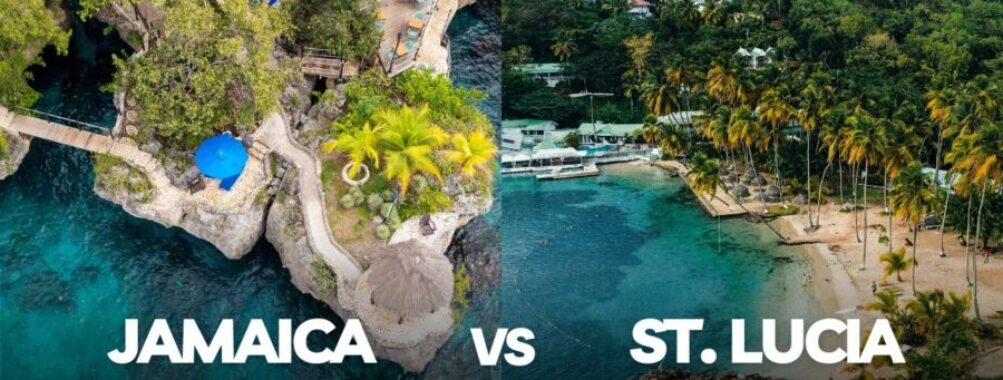
Jamaica vs St. Lucia: 7 Stunning Differences to Know Before Your Caribbean Escape
Choosing between Jamaica and St. Lucia for your Caribbean getaway isn’t easy. Both islands offer stunning beaches, tropical weather, and unique experiences, making them popular travel destinations.
Jamaica is larger and more developed, with famous beaches like Negril, while St. Lucia packs incredible natural beauty into a smaller, more intimate setting. What sets these islands apart is their distinct personalities.
Jamaica offers vibrant culture, music, and more extensive beaches, while St. Lucia boasts dramatic mountain scenery with the iconic Pitons and a quieter, more secluded atmosphere.
Your ideal choice depends on what you’re seeking. Jamaica might be your pick if you want lively entertainment and expansive beaches.
St. Lucia could be perfect if you prefer a romantic, less commercialized setting with breathtaking landscapes. Both islands feature friendly locals and authentic Caribbean charm but deliver distinctly different vacation experiences.
Contents
- Geographical Overview
- Location in the Caribbean
- Island Profiles
- Historical Significance
- Colonial History
- Path to Independence
- Cultural Insights
- Local Traditions
- Festivals and Events
- Travel Destinations
- Must-See Attractions
- Beach and Leisure Spots
- Eco-Tourism
- Culinary Exploration
- Local Cuisine Highlights
- Street Food and Dine-out
- Socioeconomic Factors
- Economic Activities
- Challenges and Opportunities
- Tourist Information
- Accommodation
- Travel Tips and Safety
- Events and Nightlife
- Sports and Recreation
- Cricket Rivalry
- Other Popular Sports
- Environmental Concerns
- Conservation Efforts
- Impacts of Tourism
- Frequently Asked Questions
- Which destination offers a better experience for a luxury vacation, St. Lucia or Jamaica?
- What are the unique attractions of St. Lucia compared to those in Jamaica?
- How do the safety concerns for travelers differ between St. Lucia and Jamaica?
- Are there notable differences in cultural experiences for tourists in Jamaica versus St. Lucia?
- What are the cost differences for a typical vacation between Jamaica and St. Lucia?
- How does the quality and ambiance of Sandals Resorts in St. Lucia compare to those in Jamaica?
- More Travel Guides
Geographical Overview
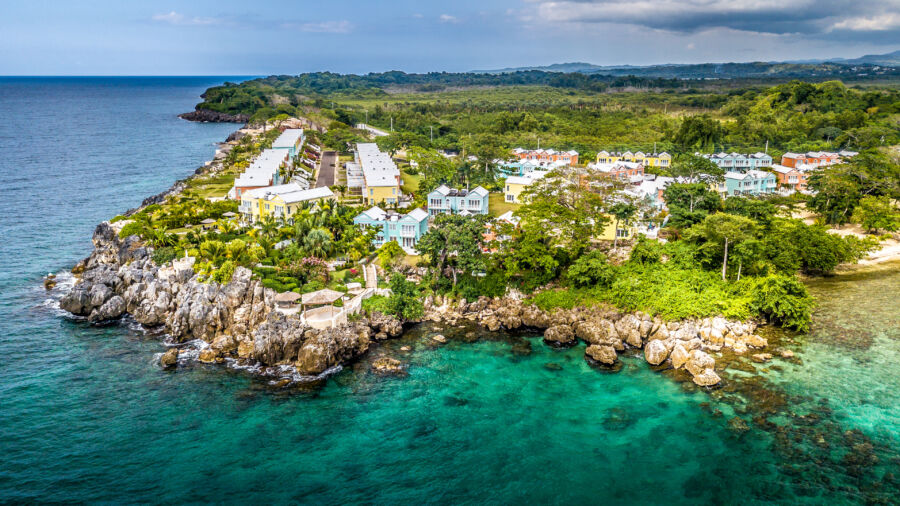
Jamaica and St. Lucia offer distinctly different geographical experiences despite being in the Caribbean. These islands have unique physical features that shape their landscapes, from mountainous terrain to varied coastlines.
Location in the Caribbean
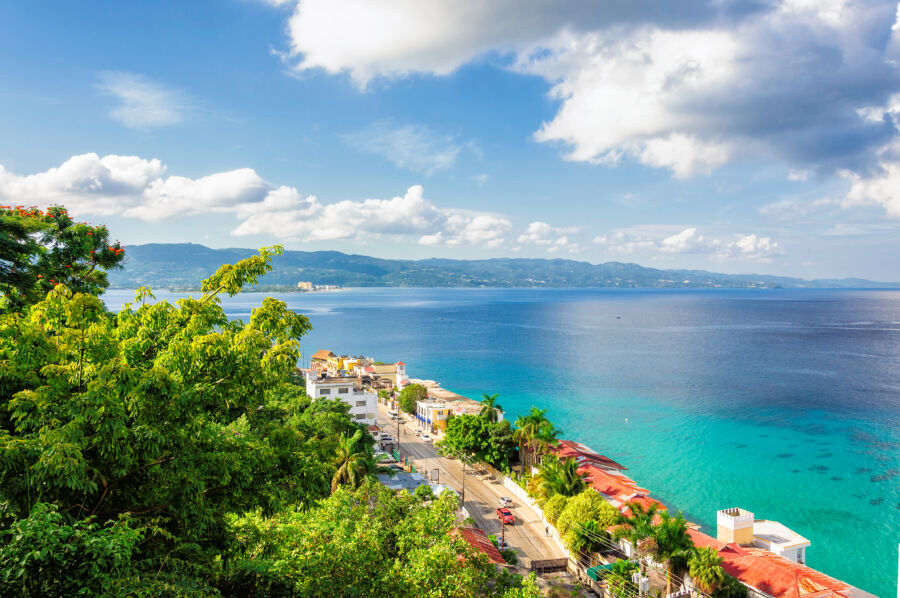
Jamaica sits in the northern Caribbean Sea, making it part of the Greater Antilles island chain. It’s positioned south of Cuba and west of Haiti and the Dominican Republic. The island is strategically located in the Caribbean region, about 90 miles south of Cuba.
On the other hand, St. Lucia is located in the eastern Caribbean Sea, forming part of the Lesser Antilles. It sits between Martinique to the north and St. Vincent and the Grenadines to the south. This positioning places St. Lucia among the Windward Islands, a subgroup of the Lesser Antilles.
Nearby islands include Dominica, which lies north of Martinique, and St. Martin, situated much further north in the Leeward Islands. This eastern Caribbean cluster creates a distinctive island-hopping opportunity for travelers.
Island Profiles
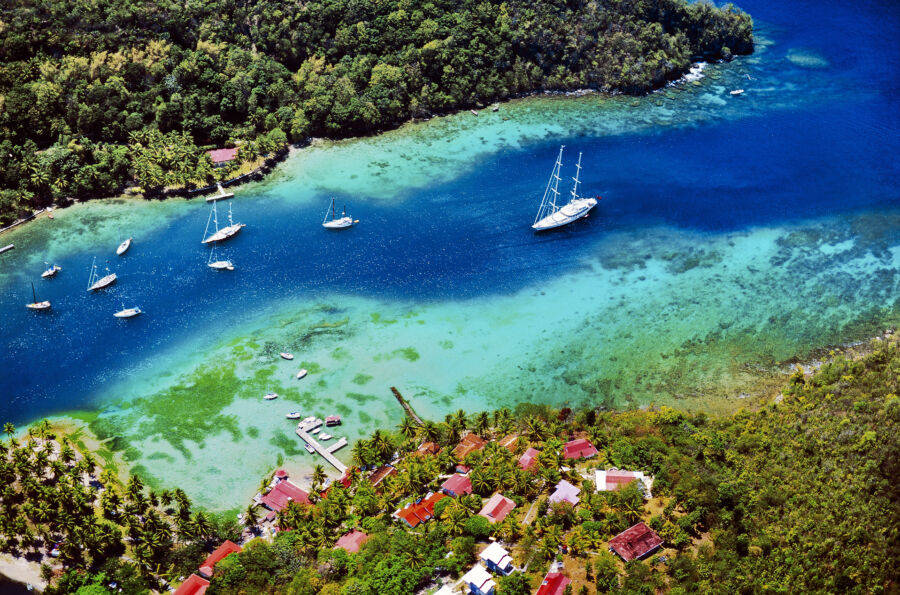
Jamaica is significantly larger than St. Lucia, covering approximately 10,991 square kilometers compared to St. Lucia’s modest 616 square kilometers. This makes Jamaica nearly 17 times larger than St. Lucia.
Jamaica features diverse topography with mountainous interiors, including the famous Blue Mountains, reaching over 2,200 meters. The island boasts 1,022 kilometers of coastline with numerous beaches and natural harbors. The landscape varies from lush areas near Ocho Rios and Dunn’s River Falls to drier regions in other parts.
St. Lucia may be smaller, but it offers dramatic scenery dominated by the iconic Piton Mountains. These twin volcanic peaks rise majestically from the sea on the southwestern coast. St. Lucia has approximately 158 kilometers of coastline and is known for its lush, mountainous interior covered with rainforests.
Both islands feature tropical climates, though their different sizes and elevations create unique microclimates and vegetation patterns across their territories.
Historical Significance
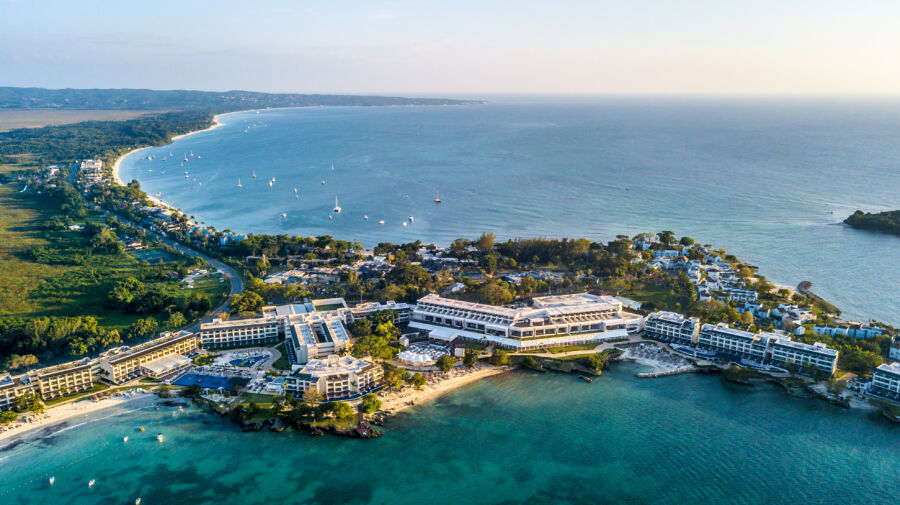
Jamaica and St. Lucia have rich historical backgrounds that have shaped their unique cultural identities. European colonization deeply influenced thesese Caribbean islands, which struggled through similar, distinct paths to independence.
Colonial History
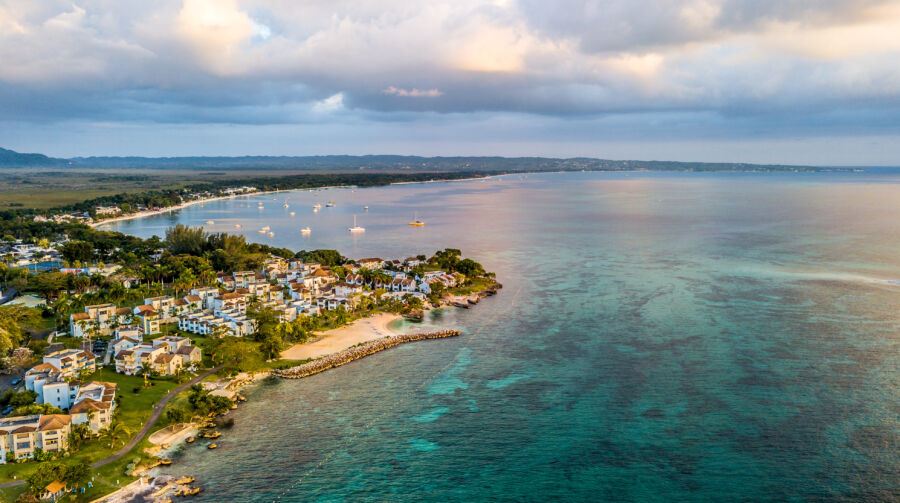
The colonial histories of Jamaica and St. Lucia are marked by European powers competing for control. The Spanish initially settled in Jamaica after Columbus visited in 1494. The British later captured it in 1655, establishing it as a key sugar-producing colony.
St. Lucia had a more tumultuous colonial experience. The island changed hands between the French and British at least 14 times! This back-and-forth created St. Lucia’s unique blend of French and British influences, which is still evident today.
Both islands relied heavily on plantation economies and the tragic institution of slavery. Sugar, rum, and other tropical crops formed the backbone of their colonial economies.
The colonial period left lasting impacts on language and culture. Jamaica retained primarily English influences, while St. Lucia developed a French-based Creole language called Kwéyòl alongside English.
Path to Independence

Jamaica’s journey to independence began after World War II. The island gained increasing self-government through the 1940s and 1950s. It briefly joined the West Indies Federation but withdrew in 1961, leading to its collapse.
Jamaica finally achieved full independence from Britain on August 6, 1962, becoming one of the first Caribbean nations.
St. Lucia’s path was a bit longer. The island became an associated state of the United Kingdom in 1967, giving it partial control over internal affairs while Britain handled defense and foreign relations.
Full independence for St. Lucia occurred a decade later, on February 22, 1979. Since then, both nations have developed as sovereign states within the Commonwealth, maintaining ties with Britain while forging their national identities.
Despite their different timelines, both countries faced similar post-colonial challenges in developing stable economies and political systems.
Cultural Insights
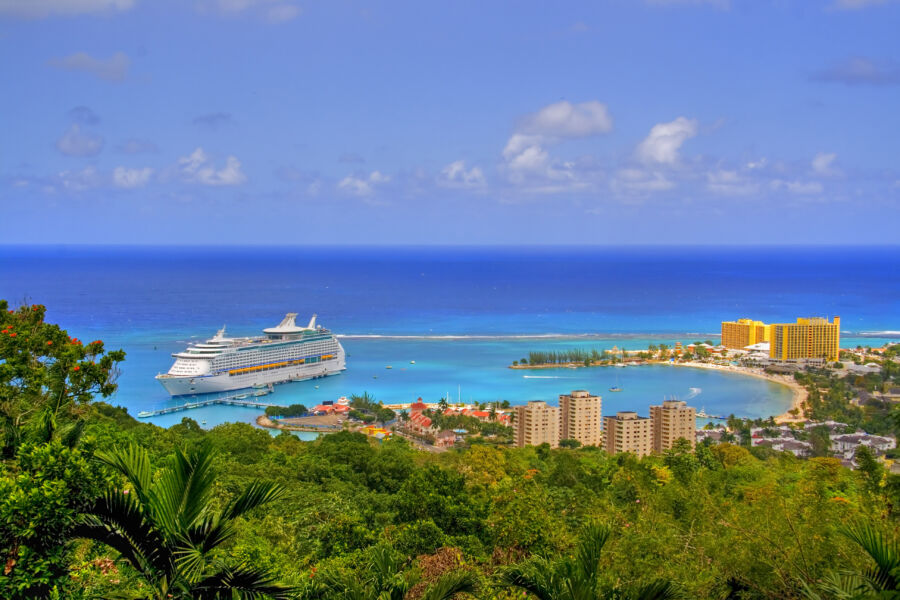
Jamaica and St. Lucia showcase vibrant Caribbean cultures with unique traditions and celebrations. While sharing some similarities, each island maintains distinct cultural identities shaped by their histories and influences.
Local Traditions
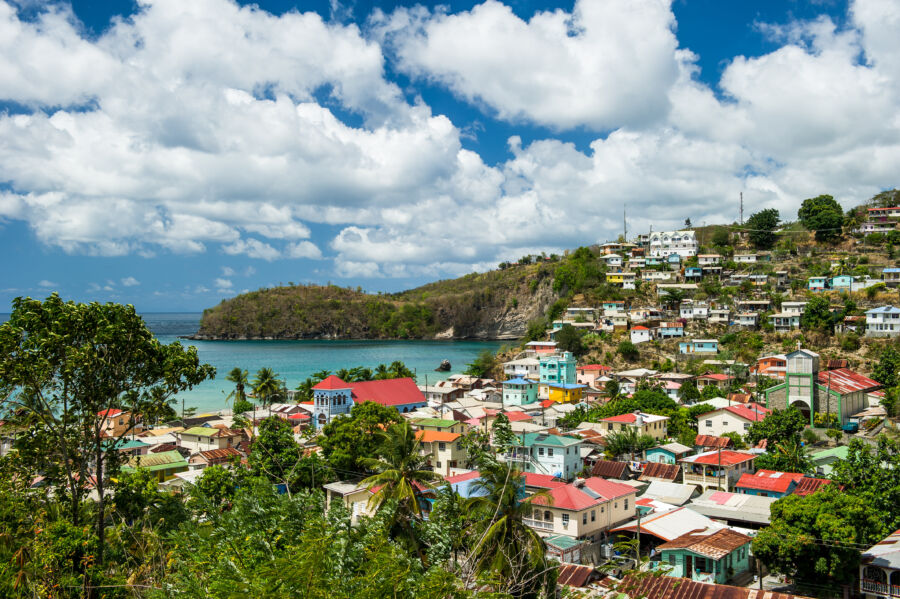
Jamaica’s culture runs deep with Rastafarianism, reggae music, and a laid-back “irie” attitude that visitors immediately notice. The island’s traditions blend African, European, and Indigenous influences, reflected in everything from the local patois language to the vibrant street art.
Jamaican food traditions center around jerk cooking, with roadside stands offering spicy chicken and pork to make your taste buds dance. Don’t miss trying authentic Jamaican rum or Blue Mountain coffee!
St. Lucia’s traditions show stronger French and British colonial influences. The island’s Creole culture is evident in its food, language (Kwéyòl), and daily life. Many St. Lucians still practice traditional fishing methods and craft-making.
The “fish fry” gatherings in coastal villages are perfect for experiencing authentic St. Lucian community life. Local dishes feature fresh seafood with unique spice blends not found elsewhere.
Festivals and Events
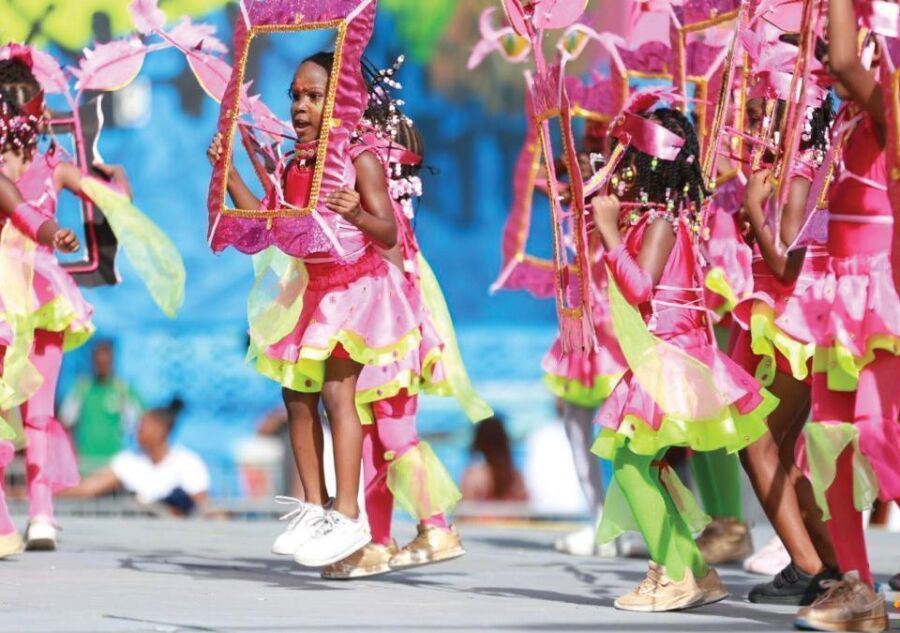
Jamaica’s festival calendar bursts with energy! Reggae Sumfest in Montego Bay attracts music lovers from around the world. Carnival celebrations feature colorful costumes, soca music, and street parades for days.
The island’s Independence Day (August 6) is celebrated nationwide with music, dance, and food. For a unique cultural experience, check out the Accompong Maroon Festival in January, which celebrates Jamaica’s free African communities.
St. Lucia’s biggest cultural event is Carnival, which is held in July. It features vibrant parades, calypso competitions, and street parties. The St. Lucia Jazz Festival blends Caribbean rhythms with international jazz in spectacular beachside venues.
The island’s Jounen Kwéyòl (Creole Day) celebrates St. Lucian heritage through traditional dress, food, and music. Cricket fans should catch a St. Lucia Kings match during the Caribbean Premier League season to taste local sporting passion.
Travel Destinations
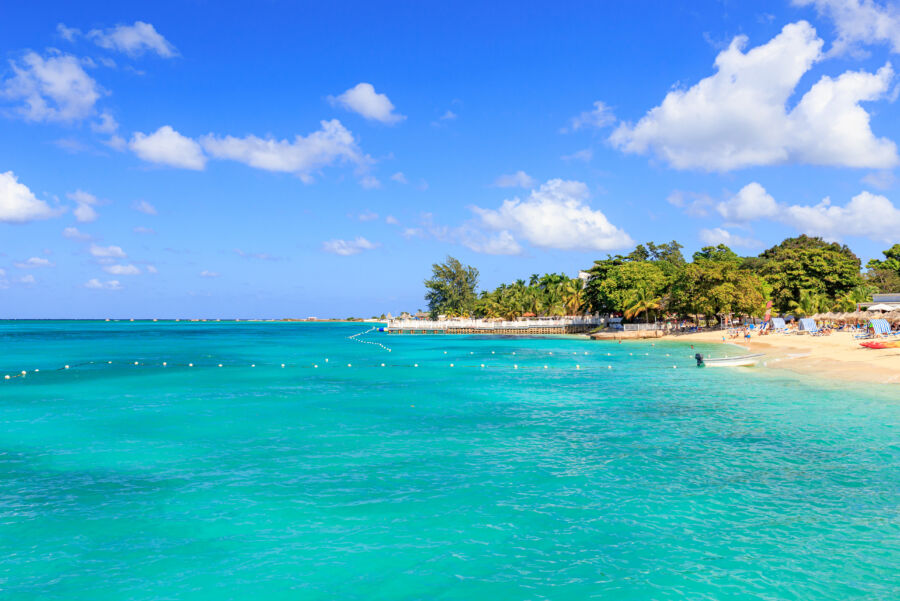
Jamaica and St. Lucia offer stunning locations catering to different travel preferences. Jamaica excels with its vibrant beach scenes and cultural attractions, while St. Lucia boasts dramatic landscapes and natural wonders that leave visitors in awe.
Must-See Attractions
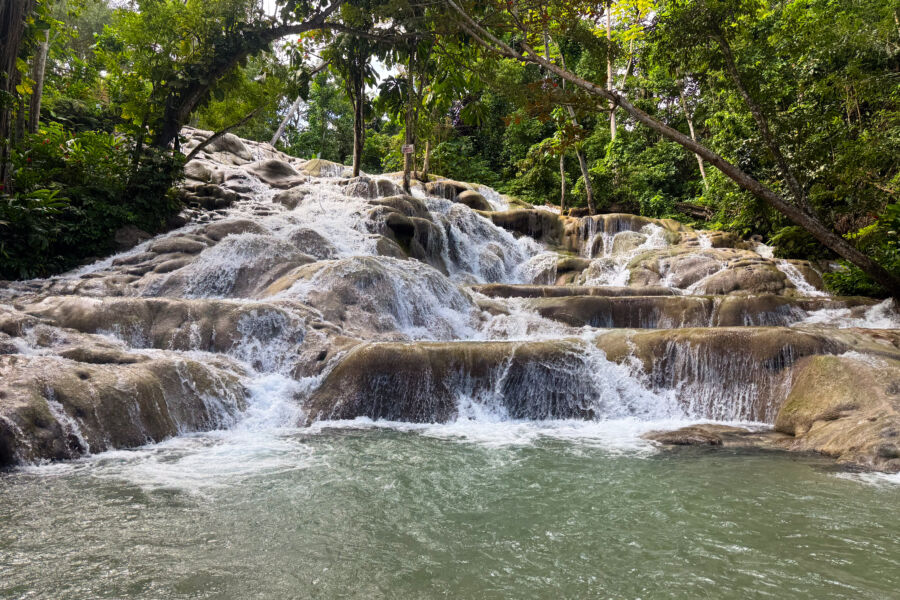
Dunn’s River Falls near Ocho Rios tops many travelers’ lists in Jamaica. This natural wonder lets you climb 600 feet of cascading water with guides. The experience is refreshing and uniquely Jamaican!
For music lovers, a visit to the Bob Marley Museum in Kingston offers insight into the reggae legend’s life and legacy. The museum is housed in his former home and recording studio.
St. Lucia’s iconic Pitons dominate the southwestern coastline. These twin volcanic peaks are UNESCO World Heritage sites and create a dramatic photo backdrop. Soufriere, the former capital, offers visitors the chance to explore drive-in volcanoes and sulfur springs for a truly unique experience.
Gros Islet’s Friday Night Street Party gives travelers a taste of authentic St. Lucian culture with local food, music, and dancing.
Beach and Leisure Spots

Jamaica’s Seven Mile Beach in Negril offers pristine white sand and crystal-clear waters perfect for swimming and sunbathing. The laid-back vibe attracts visitors looking to relax and enjoy beach bars along the shore.
Doctor’s Cave Beach in Montego Bay provides excellent snorkeling opportunities with its protected waters and marine life. Many visitors praise Jamaica’s beaches as superior to St. Lucia’s in terms of swimming conditions.
St. Lucia counters with Reduit Beach near Gros Islet, offering golden sands and calm waters ideal for families. The beach is lined with restaurants and water sports rentals.
All-inclusive resorts dominate both islands, particularly around Ocho Rios in Jamaica and Rodney Bay in St. Lucia. These resorts often boast private beaches and comprehensive amenities, making them ideal for travelers seeking hassle-free vacations.
Eco-Tourism
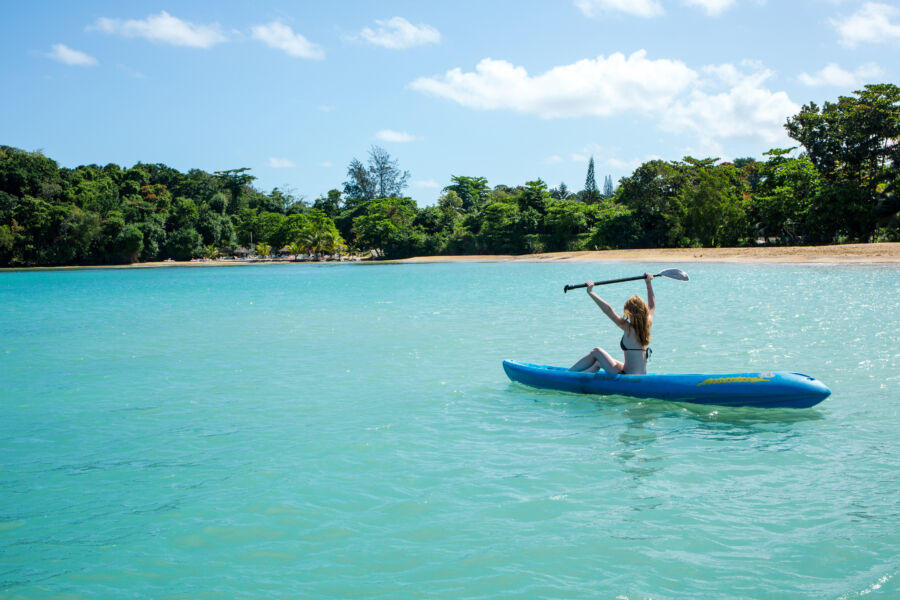
St. Lucia excels in eco-tourism due to its lush rainforests and diverse ecosystem. The Edmund Forest Reserve offers hiking trails through dense jungle, with expert guides pointing out exotic birds and plants.
Whale-watching tours operate year-round, with the best viewing between November and March. Visitors regularly spot sperm whales and various dolphin species.
Jamaica’s Blue Mountain region provides stunning hiking opportunities and famous coffee plantation tours. The area’s cooler climate makes it perfect for exploring on foot while taking in spectacular views.
Kayaking tours through Jamaica’s luminous lagoon offer a magical nighttime experience. When disturbed by movement in the water, microorganisms glow blue.
Both islands feature zipline adventures through forest canopies, though St. Lucia’s courses often include views of the Pitons, giving them a scenic edge for many travelers.
See Related: Most Affordable Summer Destinations
Culinary Exploration

Food and drink are essential parts of the Caribbean experience in both Jamaica and St. Lucia. Each island offers distinct flavors and dining experiences shaped by its unique cultural history and local ingredients.
Local Cuisine Highlights

Jamaica’s food scene is famous for its bold, spicy flavors. Jerk chicken is the star attraction, seasoned with a fiery blend of Scotch bonnet peppers and allspice. Many travelers rave about this smoky, spicy dish, which is often cooked over pimento wood.
Another Jamaican favorite dish is ackee and saltfish, the national dish. This unique breakfast combines ackee fruit’s creamy, scrambled egg-like texture with salted cod.
St. Lucia offers a Creole cuisine that blends African, French, and Indian influences. Fresh seafood is prominently featured in dishes like grilled mahi-mahi and fish stew. The island’s national dish is green fig and saltfish (green bananas with salted cod).
St. Lucia’s chocolate deserves special mention. The island produces some of the finest cacao in the Caribbean, and many visitors enjoy chocolate-themed tours and tastings.
Street Food and Dine-out

Food stands, and roadside jerk centers in Jamaica provide affordable, authentic meals. Patties (savory pastries filled with spiced meat) make perfect grab-and-go snacks. Local rum shops offer samples of the island’s famous spirits alongside home-style cooking.
St. Lucia’s Friday night fish fry in Anse La Raye gives visitors a taste of local culture. Vendors set up stalls selling grilled lobster, fish, and other seafood specialties while locals and tourists mingle.
Both islands offer upscale dining options. Jamaica’s high-end restaurants often showcase elevated versions of traditional dishes. St. Lucia has developed a reputation for gourmet dining, especially in the Rodney Bay area.
For drinks, Jamaica’s famous rum and Red Stripe beer contrast with St. Lucia’s Piton beer and cocoa tea. Don’t miss trying rum punch on either island—each has its special recipe!
Socioeconomic Factors

Jamaica and St. Lucia differ significantly in their economic structures, income levels, and social challenges despite being Caribbean island nations. Their economies rely heavily on tourism but have distinct characteristics that shape residents’ daily lives.
Economic Activities

Jamaica boasts a much larger economy with a GDP of about $15.7 billion compared to St. Lucia’s smaller $1.9 billion economy. This size difference reflects Jamaica’s more diverse economic activities and larger population base.
Tourism drives both economies, but they’ve developed different niches. Jamaica attracts mass tourism with its all-inclusive resorts and cruise ship ports. St. Lucia, meanwhile, has positioned itself in the luxury tourism market, targeting higher-spending visitors.
Agriculture remains important in both countries. Jamaica is known for coffee, sugar, and bananas, while St. Lucia focuses on banana exports, though this sector has declined. Jamaica also has significant bauxite mining operations, which St. Lucia lacks.
Financial services contribute significantly to St. Lucia’s economy, with offshore banking playing a role in economic activity.
Challenges and Opportunities

Both countries struggle with high debt-to-GDP ratios exceeding 60%, limiting government spending on social programs. This debt burden creates ongoing economic pressure and affects public services.
Poverty affects both nations but manifests differently. Jamaica has more visible urban poverty and stark wealth inequality between tourists and locals. Meanwhile, St. Lucia has less extreme visible poverty but still faces challenges in rural areas.
Climate change poses serious threats to both economies through extreme weather events that damage infrastructure and harm tourism assets. Hurricane vulnerability affects insurance costs and investment decisions.
Both islands have opportunities for sustainable tourism development, with St. Lucia particularly well-positioned for eco-tourism. Digital nomad programs offer new economic possibilities as both countries invest in internet infrastructure to attract remote workers.
Tourist Information

Both Jamaica and St. Lucia offer unique experiences for visitors, with different accommodation options, safety considerations, and entertainment choices that can make or break your vacation.
Accommodation
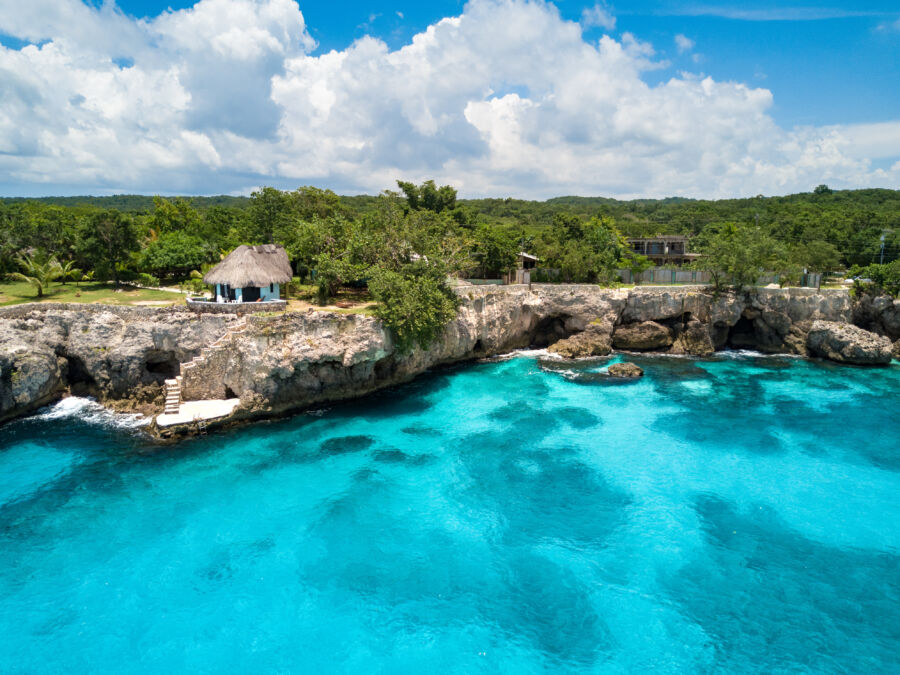
Jamaica boasts many places to stay, from luxury all-inclusive resorts to budget-friendly guesthouses. The island’s north coast, particularly Montego Bay and Negril, features stunning beachfront hotels and resorts with white sand beaches ideal for relaxation.
St. Lucia, being smaller, offers a more intimate experience. The island packs impressive variety into its accommodations despite its size. Rodney Bay area provides upscale resorts with incredible views of the famous Piton mountains.
All-inclusive packages are popular on both islands but are more prevalent in Jamaica. Meanwhile, St. Lucia’s boutique hotels and smaller properties give travelers more opportunities to experience local culture.
For honeymooners, St. Lucia’s secluded resorts offer a romantic atmosphere that’s hard to beat. Jamaica’s accommodations tend to be larger andsee more activity-focused.
Travel Tips and Safety

Crime concerns exist for both destinations, but taking sensible precautions ensures a smooth trip. Jamaica has higher crime rates in certain areas, particularly around Kingston. Tourists should stick to resort areas and avoid venturing alone into unfamiliar neighborhoods.
Many visitors report that St. Lucia feels safer and cleaner. The island has less poverty and crime than Jamaica, making it more comfortable for exploring beyond resort boundaries.
Transportation differs between islands, too. Jamaica’s larger size means longer travel times between attractions. Many visitors book flights to different parts of the island rather than driving.
Both islands are affected by hurricane season (June-November), so travel insurance is recommended. St. Lucia’s mountainous terrain can make driving challenging for first-timers, while Jamaica’s left-side driving requires adjustment for many visitors.
Events and Nightlife

Jamaica wins for vibrant nightlife with its reggae clubs, beach parties, and rum bars. The island’s musical heritage creates an energetic atmosphere that continues well into the night. Negril’s Seven Mile Beach hosts legendary beach parties that attract visitors worldwide.
St. Lucia offers a quieter evening scene, perfect for couples seeking relaxation. The Friday night “jump-up” street party in Gros Islet gives visitors a taste of local culture without overwhelming energy. Castries, the capital, has several good restaurants and bars that close earlier than their Jamaican counterparts.
Both islands celebrate Carnival, though on different schedules. Jamaica’s dancehall scene provides opportunities to experience authentic local music. Meanwhile, St. Lucia’s jazz festival attracts international talent in a stunning setting.
For families and those seeking tranquility, St. Lucia’s low-key entertainment provides a perfect backdrop for unwinding. Jamaica’s varied nightlife options appeal more to those wanting to party in the early hours.
See Related: Best Vacation Destinations for Singles Over 40
Sports and Recreation
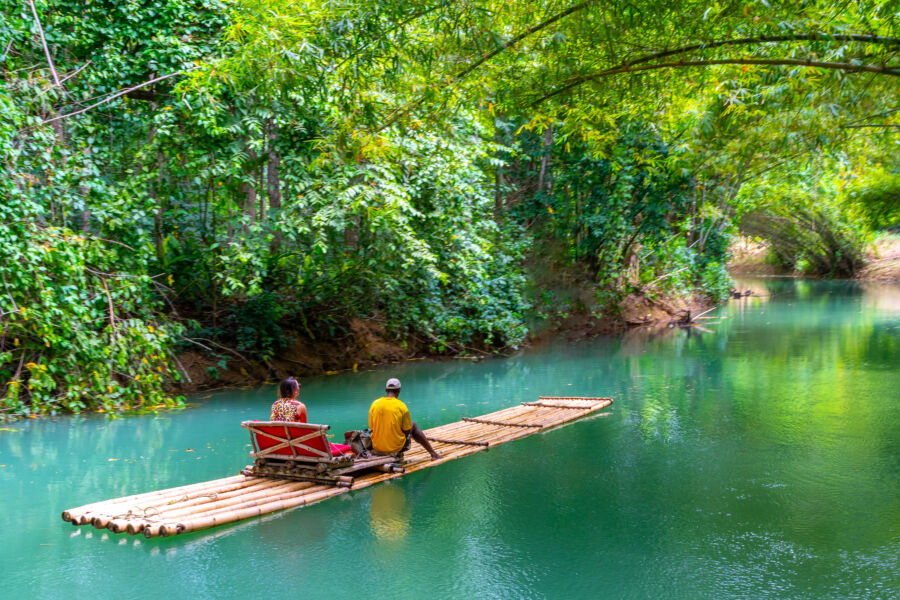
Both islands offer fantastic outdoor activities that reflect their unique cultures and landscapes. Jamaica and St. Lucia have vibrant sporting traditions visitors can enjoy watching or participating in during their stay.
Cricket Rivalry
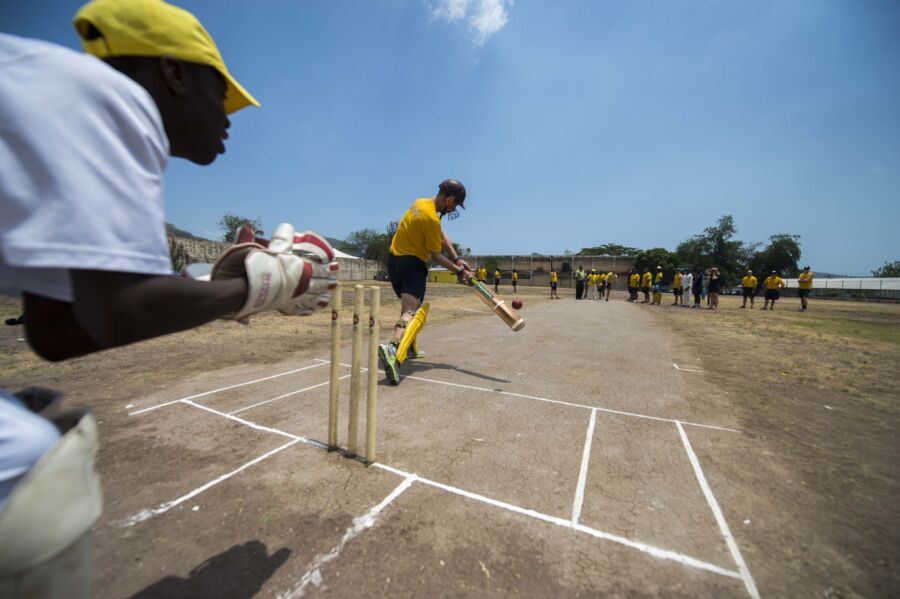
Cricket is huge in both Jamaica and St. Lucia! The islands compete fiercely in the Caribbean Premier League (CPL), with the Jamaica Tallawahs and St. Lucia Kings regularly facing off in exciting matches.
When I visited Jamaica during the cricket season, the island seemed to stop for important games. Locals gather at beachside bars and restaurants, creating an electric atmosphere you won’t miss. The Sabina Park in Kingston hosts international matches and is worth visiting without a game.
St. Lucia’s cricket scene is equally passionate but slightly smaller in scale. The Daren Sammy Cricket Ground (formerly Beausejour Cricket Ground) regularly hosts international matches and CPL games. The St. Lucia Kings have a devoted following, and catching a match there gives you a true taste of Caribbean sporting culture.
Other Popular Sports
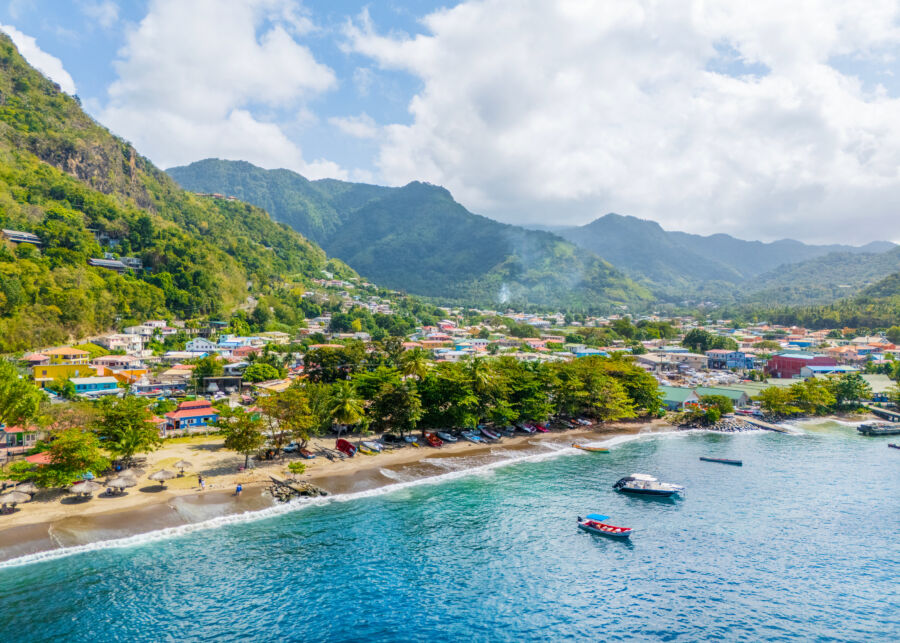
Beyond cricket, both islands embrace a variety of sports that reflect their natural environments and cultural heritage.
Jamaica dominates in track and field, producing world-class athletes like Usain Bolt. Visitors can tour the National Stadium in Kingston, where many records have been broken. The island also offers excellent golf courses around Montego Bay and Ocho Rios.
Water sports thrive in both destinations. St. Lucia’s clear waters are perfect for snorkeling and diving around coral reefs. The island also features excellent hiking, especially the famous Piton mountains, which adventurous travelers can climb with a guide.
Jamaica also offers water activities. Seven Mile Beach in Negril is ideal for paddleboarding and kayaking. For something unique, try bamboo rafting on the Martha Brae River—a peaceful experience that combines recreation with cultural history.
Environmental Concerns

Jamaica and St. Lucia face serious environmental challenges threatening their natural beauty and ecosystems. Rising sea levels, coral reef degradation, and waste management issues affect both islands, though each has unique circumstances.
Conservation Efforts

Jamaica has implemented several national parks and marine protected areas to safeguard its diverse ecosystems. The Blue and John Crow Mountains National Park protects rare plant and animal species found nowhere else. The Jamaican government has also launched initiatives to restore damaged coral reefs.
According to search results, St. Lucia is ranked 49th out of 180 countries for climate risk. The island nation focuses heavily on forest conservation.
It protects its rainforests, which house the endangered St. Lucia parrot. Its marine Management Areas help preserve coral reefs and marine life, which are crucial for the ecosystem and tourism economy.
Both islands participate in regional Caribbean conservation programs but face funding challenges. Local communities in both countries have started grassroots efforts, such as beach cleanups and tree planting, to support official conservation work.
Impacts of Tourism
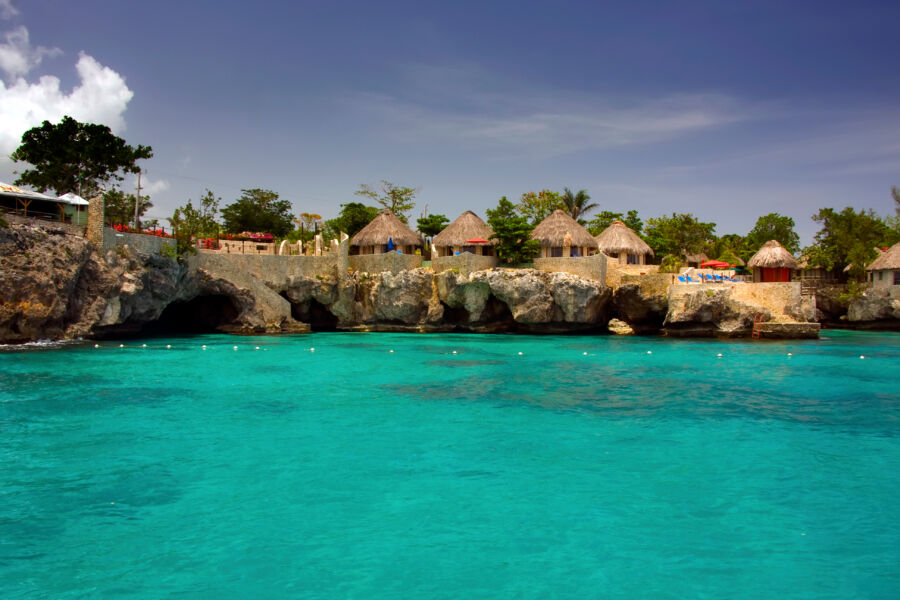
Tourism drives both economies but brings environmental costs. In Jamaica, large resorts consume substantial water resources and generate significant waste. Beach erosion has accelerated in popular areas like Montego Bay due to coastal development and increased foot traffic.
St. Lucia’s tourism sector has caused similar issues, particularly affecting its vulnerable coastal areas. The island’s volcanic beaches face erosion problems exacerbated by hotel construction and climate change. Rising sea levels threaten low-lying tourism infrastructure on both islands.
Eco-tourism has emerged as a more sustainable alternative. Jamaica’s eco-lodges in Portland parish and St. Lucia’s rainforest tours offer visitors authentic experiences while minimizing environmental impact. Both countries have begun implementing stricter regulations for new tourism development projects.
Waste management remains problematic, with plastic pollution affecting beaches on both islands. Some resorts have adopted plastic-free policies and sustainable practices to reduce their footprint.
See Related: Hidden Caribbean Beaches Locals Don’t Want Tourists Finding
Frequently Asked Questions

Travelers often have specific questions when choosing between Jamaica and St. Lucia for their Caribbean vacation. Both islands offer distinct experiences that cater to different preferences and priorities.
Which destination offers a better experience for a luxury vacation, St. Lucia or Jamaica?
St. Lucia tends to provide a more exclusive luxury experience with its boutique resorts and intimate settings. The island’s dramatic Piton mountains create a stunning backdrop for high-end accommodations like Jade Mountain and Ladera Resort.
Jamaica offers luxury, too, but with a different vibe. The island has more all-inclusive luxury resorts spread across several tourism hub,s including Montego Bay, Negril, and Ocho Rios.
For those seeking seclusion and natural beauty with their luxury, St. Lucia often wins. Jamaica might be better for those who want luxury with more entertainment options and activities nearby.
What are the unique attractions of St. Lucia compared to those in Jamaica?
St. Lucia boasts the iconic Piton Mountains, a UNESCO World Heritage site that provides stunning views and challenging hiking opportunities. The drive-in volcano and Sulphur Springs offer unique geological experiences you won’t find in Jamaica.
Jamaica’s attractions are more activity-focused, with Dunn’s River Falls, the Blue Mountains, and the Martha Brae River for rafting. The island also has a stronger focus on music, history, and culture.
St. Lucia’s Diamond Botanical Gardens and Pigeon Island National Park offer natural beauty in a more compact setting. Jamaica’s attractions are more spread out, requiring more travel time between sites.
How do the safety concerns for travelers differ between St. Lucia and Jamaica?
St. Lucia generally has fewer safety concerns for tourists compared to Jamaica. The island is smaller, and there is less crime targeting visitors. Most travelers report feeling comfortable exploring beyond their resorts.
Jamaica has more areas that require caution, particularly in cities like Kingston. Tourist zones in Montego Bay, Negril, and Ocho Rios are well-policed, but visitors are often advised to use resort-recommended transportation.
Both islands recommend standard travel precautions. St. Lucia may offer more freedom for independent exploration, while Jamaica often works better with guided tours or resort-arranged activities for peace of mind.
Are there notable differences in cultural experiences for tourists in Jamaica versus St. Lucia?
Jamaica offers a more prominent and internationally recognized cultural scene centered around reggae music, Rastafarian culture, and vibrant local markets. The island’s cultural influence is felt worldwide through its music, food, and language.
St. Lucia blends French and British colonial influences with African traditions. The island celebrates Jounen Kwéyòl (Creole Day) and has a quieter but rich cultural tapestry with distinctive food and music.
Jamaica provides more opportunities for cultural immersion at music venues, street parties, and local eateries. St. Lucia’s cultural experiences are more subdued but authentic, often centered around local festivals and community events.
What are the cost differences for a typical vacation between Jamaica and St. Lucia?
St. Lucia generally has a higher price tag, especially for accommodations. The island caters to a more upscale market with fewer budget options. Dining and activities also tend to be pricier.
Jamaica offers a wider range of price points, from budget-friendly guesthouses to luxury all-inclusive. The island’s competitive tourism market means deals are often available, especially during shoulder seasons.
Transportation costs differ, too. Jamaica’s larger size means potentially higher costs for exploring multiple areas, while St. Lucia’s compact nature makes it easier to see more without extensive transportation expenses.
How does the quality and ambiance of Sandals Resorts in St. Lucia compare to those in Jamaica?
Sandals has three resorts in St. Lucia, each with a distinctly intimate feel that takes advantage of the island’s dramatic scenery. Sandals Grande St. Lucian offers stunning views of Pigeon Island and volcanic mountains.
Jamaica hosts seven Sandals properties, offering more variety but generally larger resorts. Due to their size, the Jamaica properties tend to have more dining options and amenities but can feel less exclusive.
The St. Lucia Sandals resorts emphasize romance and seclusion, perfect for honeymooners seeking privacy. Meanwhile, Jamaica’s Sandals locations provide more entertainment options and a livelier atmosphere, ideal for those wanting more social interaction during their stay.



